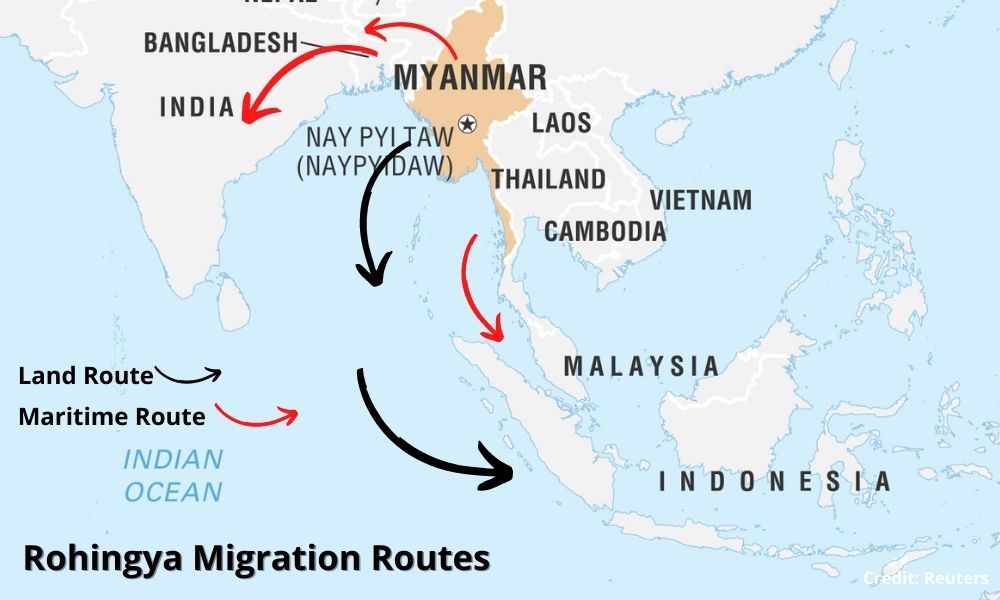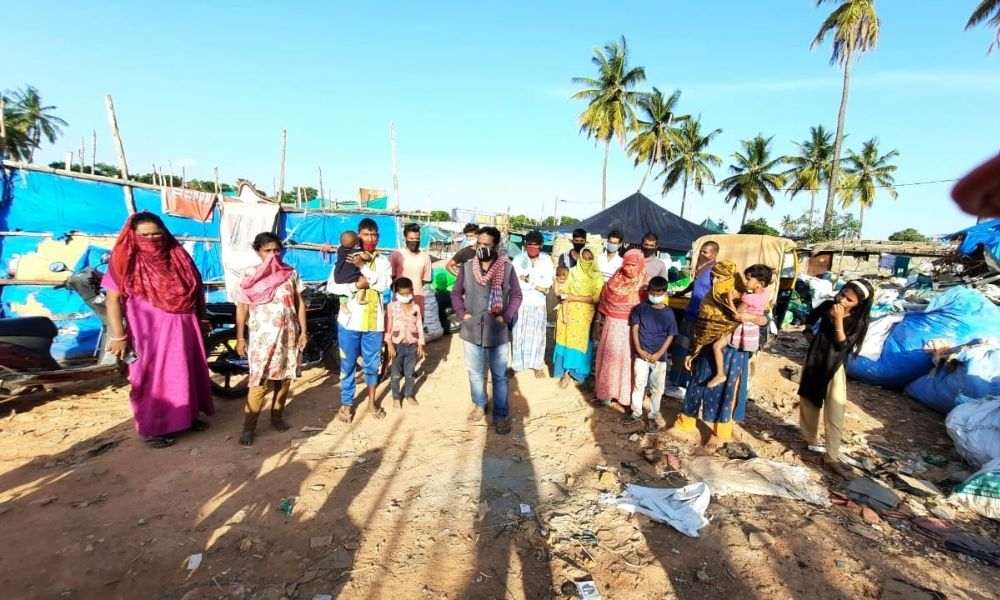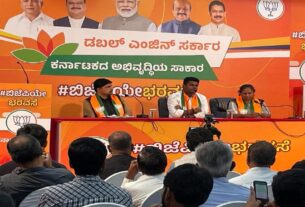Tiny homes, No toilets. More than 50 percent of children living in refugee camps suffer from malnutrition.
Bengaluru: The persecuted Rohingya Muslims in Bengaluru are grasping at straws, trying to survive in their tiny shanties without proper sanitation or water facilities. More than 50 percent of children living in the area suffer from malnutrition, activists Thomas Mathew and R. Kaleem Ullah who surveyed them found.
Recently, Laila Begum gave birth to twins who are growing up malnourished because the family has no means to buy food for them. Her husband, a ragpicker, earns Rs. 5000 a month that helps the family of four to earn two square meals a day and pay rent.
Kaleem, a spokesperson of Swaraj Abhiyan Bangalore, said among 50 children, as per data surveyed by the activists, more than 30 children are malnourished. With an average monthly earning of Rs. 2000 to Rs. 5000 per household, the families struggle to make ends meet.
Thomas said officials from the Child Rights Commission visited the camps and identified severe malnutrition in the children around four months ago. Despite their recommendation to the state government, there have been no updates so far.
Officials at the Department of Food and Civil Supplies said they did not receive any notification from the government regarding malnutrition in Rohingya children.
Kaalem said the lack of awareness among government bodies often leads to several human rights violations. The Anganwadis or local NGOs are still not aware of their rights, he added.

On Nov. 8, 2021, Victor*, one of the refugees, emailed the United Nations office in New Delhi but got no response from them. Lack of funds and ration from the United Nations pushes the families to the brink of poverty.
“The last time we got ration from the United Nations was in July 2021. We got 20 kg of rice and three kilograms of pulses for two months. It only lasted a few weeks. I spoke to several UN officials, but they have always disappointed us,” Karimullah added.
Dr. Vijayakumar, Special Officer, Secretary- General, United Nations (UN) India, agrees that lack of support from the UN has worsened the conditions of the refugees. He said, “The Secretary General’s office has already sanctioned the budget for the refugees and other migrants in India. We are still awaiting the Indian government’s response to pass the budget through the Reserve Bank of India. They need proper housing and facilities.”
The makeshift roads in the area are narrow and muddy with the overflowing sewage water. Series of shanties on both sides of the road are barely visible behind heaps of garbage, glass bottles and other scraps.

The Rohingyas, who live in Dasarahalli, earn their living from picking up scraps and selling them at the market. If the BBMP starts operating in the area, the refugees will be left with no jobs, Kaleem said.
Karimullah, his wife, five children, and two brothers live in a shack that can barely fit three people. The family defecates and showers in the open because the place lacks toilet facilities.
“It often draws stares from people living nearby, but we have no other options left. We have tried to install box toilets with the help of NGOs but the landowner did not allow us,” he said.
This has also led to multiple incidents in the past, including gang rape and murder, Kaleem claimed, who has filed two complaints at Amruthahalli Police Station.
He said the houses are built on agricultural land. The landowners do not allow NGOs to enter the area or install toilets because that converts the land into slum lands. It becomes difficult for owners to evict people from the place later.
To add to their plight, the area has no provision of storing water for everyday use. Two freshwater tankers that come in the area charge Rs. 1000 every week. The refugees contribute to pay for the tankers.
Victor said women need to walk one kilometer everyday to get fresh water for their daily chores.
Currently, he is the only person from the community who is studying nursing at a medical college in Bengaluru.
“After a lot of struggles, I managed to get admission at the college. The United Nations High Commission refugee card doesn’t provide us with any solution other than the right to life. We have to travel 30 km to get medical facilities at Bowring and Lady Curzon hospital in Shivajinagar. The nearby hospitals at Hebbal turn us away seeing our refugee cards,” Victor added.
Such human rights violations keep happening in the camp, locals allege. Though the police officials are helpful, often the refugees are left to fend for themselves.
India is not a party to the 1951 Refugee Convention or its 1967 Protocol and does not have a national refugee protection framework, a United Nations Human Rights Council (UNHRC) report mentions. Across the nation, refugees are not allowed to get a permanent job or get admitted to educational institutes with their refugee cards.
Shankar Prasad, Assistant Professor, Public Administration at Jain University believes the situation can never be resolved. If the government creates opportunities for the Rohingyas, people will start demanding the same for all slum-dwellers across India, he said.
“With two crucial elections: Uttar Pradesh and Punjab coming up, the government wants to stay beneath the radar without any controversies. To add to it, India does not have any laws on refugees. Their stance during the 2019 elections made it clear that they don’t want to support refugees, especially when it comes down to a particular religion,” he added.





Good report and it is quite comprehensive too. But what language do they speak? Did the reporter try to dwell into their ethnic roots? How do you distinguish them from Bangladeshi refugees?
How I wish you had shown a photo copy of the refugee card….